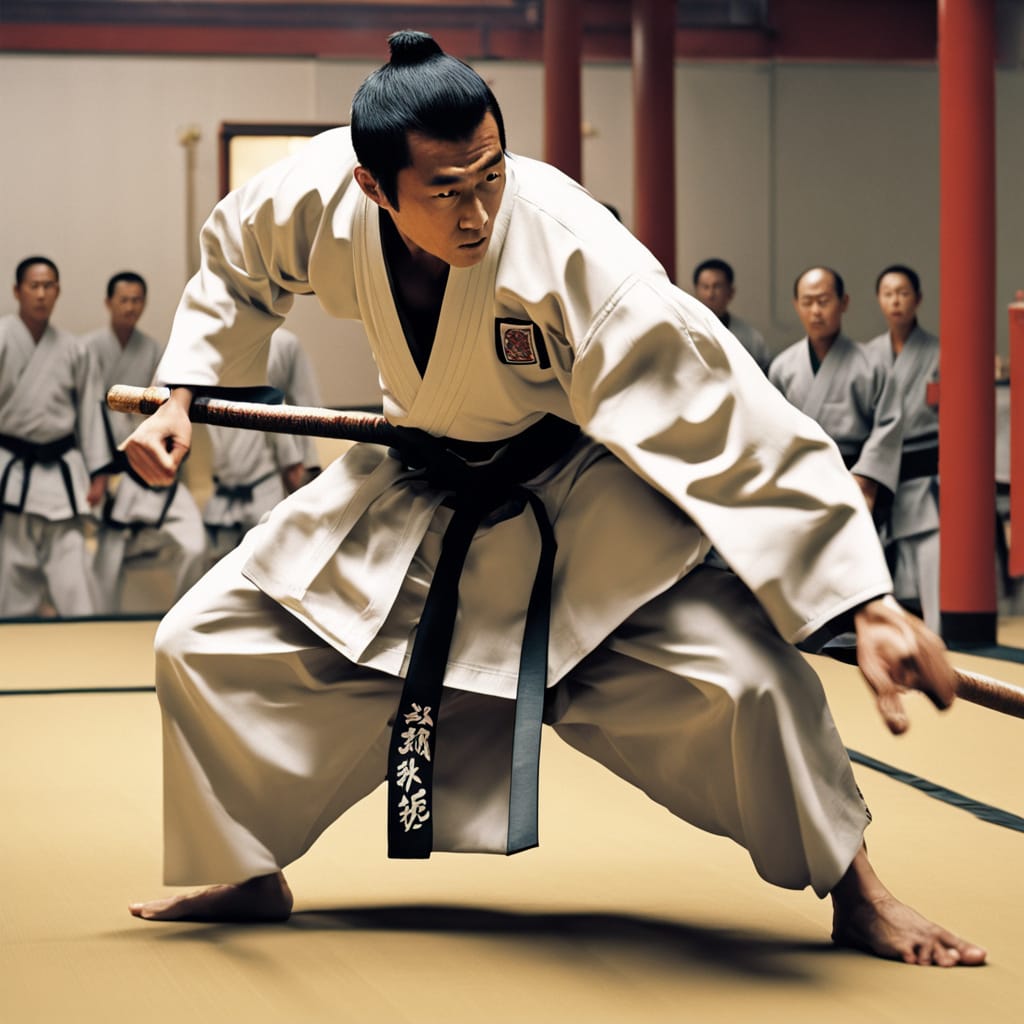Aika Jujutsu: The Ancient Art with a Global Reach

Aika Jujutsu is a martial art rooted in Japan, known for its unique combination of defensive techniques and emphasis on fluid, controlled movements. This ancient sport has not only captivated individuals for self-defense purposes but also has grown into a competitive sport recognized worldwide. From its historical origins to its role in youth development, it has carved a special place within martial arts communities globally.
Origin and History of Aika Jujutsu
The history of Aika Jujutsu can be traced back to the samurai era in feudal Japan. Unlike other forms of martial arts that emphasize striking, it developed as a method of combat based on leverage, joint locks, and throws. Samurai warriors created these techniques as a way to defend themselves in situations where they were unarmed. The word “jujutsu” itself translates to “gentle art,” underscoring its approach of yielding to an opponent’s force rather than confronting it directly. The goal was to use an opponent’s energy against them, resulting in highly effective self-defense.
As it evolved, it adapted elements from judo, aikido, and jiu-jitsu, each of which shares foundational principles with jujutsu. The refinement of techniques through the centuries allowed Aika Jujutsu to transition from battlefield survival into a structured martial art practiced by civilians. The 20th century saw further development in teaching methods and global spread. By the late 20th and early 21st centuries, it had gained recognition as a formalized sport and a method of personal growth.
Global Popularity of Aika Jujutsu
It has gained popularity worldwide. Its appeal lies in its accessibility to people of all ages and body types, as it relies on technique rather than strength. The art of Aika Jujutsu is widely practiced in Asia, North America, and Europe, each region contributing to its global growth and adding local nuances to the techniques.
In Japan, it remains an essential part of cultural heritage, with both traditional schools and modern gyms offering instruction. The martial art spread to North America and Europe after World War II, thanks to soldiers and enthusiasts who trained in Japan. Today, the United States, Canada, the United Kingdom, and Germany host some of the largest Aika Jujutsu communities outside of Asia. International tournaments and events further foster interest, uniting enthusiasts from various cultures and backgrounds.
Recently, it has gained traction in Brazil, following the Brazilian jiu-jitsu craze. Practitioners in South America have embraced the art, blending it with other regional martial arts. Australia and New Zealand have also seen growth, with a particular emphasis on family-oriented training centers. The art form’s adaptability allows it to thrive in diverse cultural settings, each adding unique aspects to the sport’s expression.
Aika Jujutsu in Youth Programs and Schools
Youth participation in Aika Jujutsu is vital to the sport’s growth and longevity. Martial arts programs tailored for children focus on discipline, respect, and physical fitness. Many schools and community centers worldwide offer Aika Jujutsu programs, introducing children to martial arts fundamentals. Through training, young practitioners learn focus, patience, and resilience, skills that are beneficial in both sports and academics.
In Japan, it has long been incorporated into school physical education programs. Japanese schools emphasize the martial art as part of character education, aiming to instill a sense of respect and honor in students. The sport’s structured environment provides a framework for learning essential life skills.
Outside Japan, various youth organizations and schools integrate it in physical education curriculums. In the United States, for example, some schools offer after-school programs that introduce martial arts, including Aika Jujutsu. Similar programs exist in the United Kingdom and Australia, promoting both physical fitness and mental discipline. Parents and educators support these programs for their emphasis on non-violence, self-discipline, and teamwork.
For older students, competitions offer an exciting avenue to showcase skills. Amateur leagues host tournaments for youths, allowing participants to experience competitive matches. These events emphasize sportsmanship and provide valuable experience without the intense pressure of professional-level competitions.
Professional Leagues and Tournaments in Aika Jujutsu
As it gained popularity, several professional leagues emerged. The most prominent is the International Aika Jujutsu Federation (IAJF), which governs the sport’s rules and hosts international competitions. The IAJF oversees a range of events, from regional tournaments to the prestigious World Aika Jujutsu Championships held annually. Participants from over 50 countries gather to compete, showcasing high-level techniques and athleticism.
Europe has several prominent leagues, including the European Aika Jujutsu Association (EAJA), which organizes tournaments across the continent. These events attract top competitors and foster talent from amateur levels to professional rankings. In North America, the United States Aika Jujutsu League (USAJL) hosts several annual tournaments, including the North American Aika Jujutsu Championships, which serves as a qualifier for international competitions.
In Asia, Japan leads with its own national leagues. The Japan Aika Jujutsu Association (JAJA) holds a series of events and competitions that highlight both traditional and modern styles. These tournaments draw a significant audience and are often televised. South Korea and China also boast active Aika Jujutsu communities, with their own national championships that promote regional talent and maintain strong rivalries with Japan.
Social and Political Significance of Aika Jujutsu
The cultural and social influence of Aika Jujutsu extends beyond the dojo. In Japan, it is revered as part of the national heritage, symbolizing resilience, humility, and discipline. Through the practice of Aika Jujutsu, practitioners engage with values that echo throughout Japanese society. This respect for the sport enhances its status, positioning it as more than just a physical activity.
Outside Japan, it has been adopted by various social groups as a form of empowerment. Women, in particular, have embraced it for self-defense, as the techniques emphasize control over brute strength. Many Aika Jujutsu schools worldwide offer self-defense workshops aimed at vulnerable communities, contributing to social welfare.
Politically, it has been linked to diplomacy, especially between Japan and countries where it is popular. Through joint tournaments, exchange programs, and cultural showcases, the sport has facilitated stronger connections between nations. For example, the Japan-America Aika Jujutsu Friendship Tournament is held annually to foster goodwill and cultural exchange between Japanese and American athletes. Such events emphasize the potential for martial arts to transcend political boundaries, promoting peace and unity.
Rules of Aika Jujutsu
The rules of Aika Jujutsu emphasize safety, respect, and skill. Matches are typically held in a controlled environment with mats to ensure a soft landing for throws. Competitions may vary slightly between organizations, but most follow the International Aika Jujutsu Federation’s guidelines.
- Match Duration: Standard matches last for three minutes, with points awarded for successful techniques. If no winner emerges within the timeframe, the match may go to a sudden-death round.
- Scoring: Points are awarded for controlled throws, joint locks, and submissions. A successful throw scores the highest points, especially if the opponent is unbalanced and falls cleanly. Joint locks and submissions score fewer points but contribute to the overall score.
- Prohibited Techniques: Strikes, such as punches or kicks, are generally prohibited in Aika Jujutsu competitions. The focus is on grappling techniques, minimizing the risk of serious injury.
- Protective Gear: Participants must wear protective gear, including gloves and shin guards, depending on the event’s level. Aikido-style uniforms are common, designed for flexibility and durability.
- Code of Conduct: Respect and discipline form the foundation of Aika Jujutsu. Before and after matches, opponents bow to one another, a sign of mutual respect.
- Refereeing: Each match is officiated by a trained referee who ensures adherence to rules and calls fouls if necessary. Competitors who engage in prohibited moves or display unsportsmanlike behavior risk disqualification.
In addition to these rules, each league may impose additional guidelines tailored to specific tournament formats. This standardization ensures that its competitions remain consistent worldwide, fostering fair competition.
The Future of Aika Jujutsu
The future of Aika Jujutsu looks promising, with continued growth expected in new regions. Its inclusion in school programs and community centers ensures a steady stream of new practitioners. As more people discover the benefits of it, from physical fitness to mental resilience, it is likely to expand its influence even further.
Technology also plays a role in the sport’s future. Online classes and virtual training have allowed people to learn it without geographic limitations. Social media platforms showcase techniques, inspiring new generations to pursue this martial art.
Efforts are underway to secure a spot for it in the Olympic Games. While martial arts such as judo and karate have been included in recent Olympics, the inclusion of Aika Jujutsu would further elevate the sport’s status. Achieving this goal would bring it to a global audience, boosting its popularity and recognition worldwide.
Conclusion
It stands as a unique martial art with a rich history, deep cultural significance, and a promising future. From its origins among Japanese samurai to its modern-day role as a popular sport, it continues to captivate people worldwide. Its presence in schools, professional leagues, and community programs attests to its widespread appeal and enduring relevance.
The sport provides valuable skills that extend beyond self-defense, shaping character, fostering discipline, and promoting respect among practitioners. With its global popularity and efforts to include it in international competitions, it is poised to become even more prominent in the world of martial arts. For enthusiasts, practitioners, and spectators alike, the world of Aika Jujutsu offers an exciting blend of tradition, skill, and unity across cultures.





